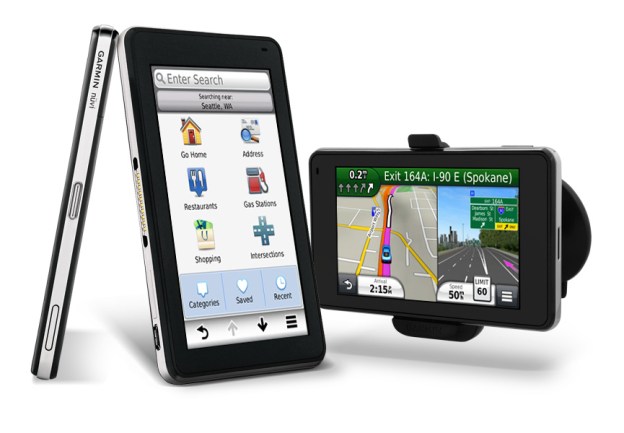
Consumers these days are increasingly relying on their smartphones and built-in vehicle navigation systems to get from points A to point B, but that doesn’t mean there’s no place for standalone GPS navigation systems. To that end, Garmin has decided to make choosing one “easier than ever” by introducing new fewer than 15 new nüvi GPS navigation systems spanning six new product lines. The new systems are further organized into three groups—Essential, Advanced, and Prestige—which have nothing to do with their series or model numbers and, we assume, just make choosing one that much easier.
“Whether you’re a recent graduate headed off to college, a busy parent running the kids around town, or someone looking for the best in electronics, the tiered structure of the 2012 nüvi line makes it easy to pick the features and price point that are right for you,” said Garmin VP of worldwide sales Dan Bartel, in a statement.
First up, the “Essential” nüvi 30, 40, and 50 series sport 3.5-inch, 4.3-inch, and 5-inch displays, respectively, and are designed to be affordable, basic GPS systems: they feature a database of 6 million points of interest, come with lifetime map updates, and both lane assistance and junction views to make it easier to get around. Garmin bills the five models in the nüvi 30/40/50 series as “no frills,” but they’re all many people want in a GPS. Suggested prices range from $109.99 to $179.99.

Next, the nüvi 2400/2500 series—dubbed “Advanced” models—sport Garmin’s Guidance 2.0 navigation engine, which purports to give users quicker routing and map displays andd more intuitive searching. The systems also display nearby businesses right on the map, and complex exchanges can be viewed using photoReal junction view, which attempts to realistically portray road signs with photographic detail, with correct lanes clearly marked. The junction database covers almost 60,000 junctions in the U.S. and Canada. The 2400/2500 series also sport 3D Traffic, with data collated from other Garmin users, cell phone users, radio feeds, news stations, and more to provide a full picture of nearby traffic. The lines sport seven models, ranging from $169.99 to $249.99.

Finally, the three models in the nüvi 3400 series—these are the “Prestige” models—feature Garmin’s Guidance 3.0 technology, which adds myTrends frequent route analysis to the mix, along with a Safe Texting feature that enables users to send and receive text messages without taking their eyes off the road (or hands off the wheel). The photoReal junction view takes another step with a Birds Eye junction view that highlights proper lanes and complex junctions from an overhead perspective. All the models feature 4.3-inch pinch-to-zoom touchscreen displays; they’re priced from $329.99 to $399.99.
Garmin expects all the new nüvi units will be on sale in October.
Editors' Recommendations
- How SpaceX could transform Starlink into an ultraprecise GPS network
- GPS 3 is the future of navigation, and it’s set to roll out in 2023


